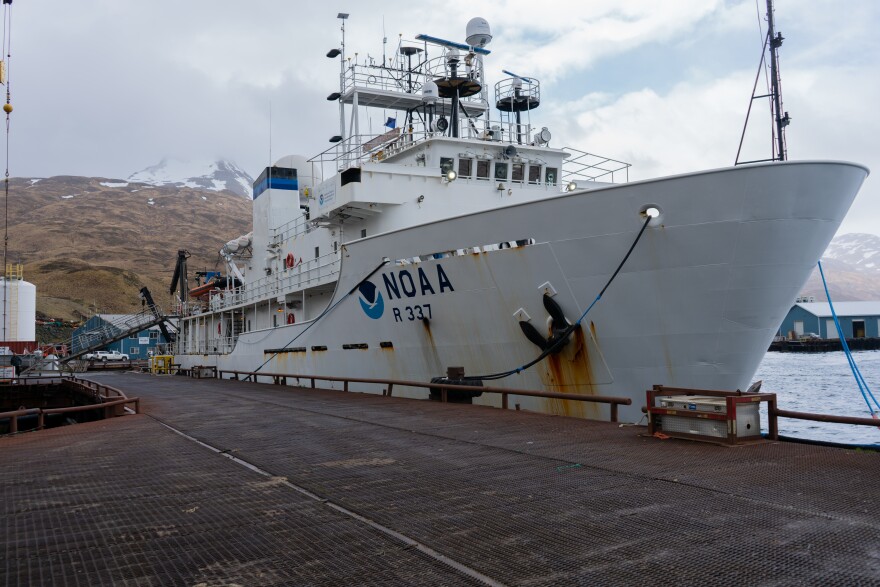The Okeanos Explorer docked in Unalaska last month, after finishing its first of six expeditions, mapping out the deep seafloor around the Aleutian Islands. It was almost June and the weather was starting to calm down from the winter season, making it safer for research boats to head out to the Bering Sea.
Sam Cuellar is with the National Oceanic and Atmospheric Administration, and works as the expedition coordinator on the 224-foot research vessel. And while on the Okeanos Explorer in May, Cuellar and his crew discovered three seeps bubbling gas through the seafloor in the Aleutian Trench.
According to NOAA, the discovery is crucial because these gas seeps can create unique surrounding habitats and provide potential sources of alternative energy and biopharmaceuticals. But to Cuellar and his crew, it was just another day at work.
“You're in that kind of routine,” he said. “It's not exciting because it's not important. It's just part of your job. And it's really cool to note, but you just keep going on with your job and keep looking for more.”
According to Cuellar, finding these gas seeps wasn't a total surprise. That’s because there's research from the U.S. Geological Survey that predicts where gas seeps could be in Alaskan waters. And now, with more advanced machinery, there can be more advanced data collection from the seafloor.
“Now that you're seeing the different technologies catch up with being able to more properly and economically extract resources from the deep seafloor,” said Cuellar. “We need to better understand [resources] for protection, but also to understand what kind of resources are here.”
Alaska’s waters are predominantly unexplored. Cuellar said it’s partially due to the state’s remoteness from the rest of the country and the environmental difficulties that come with being so far north.
But, he said, retracting ice sheets make areas more accessible than ever before.
“And so, there's a renewed push by the U.S. government to better understand what is in those types of waters now that they're accessible,” Cuellar said.
The Okeanos Explorer is out at sea until mid-October, mapping the deep waters around the Aleutian Islands, in the Aleutian Trench, and in the Gulf of Alaska. You can track the ship live online on NOAA’s website and the collected data will be accessible to the public during and after expeditions.









